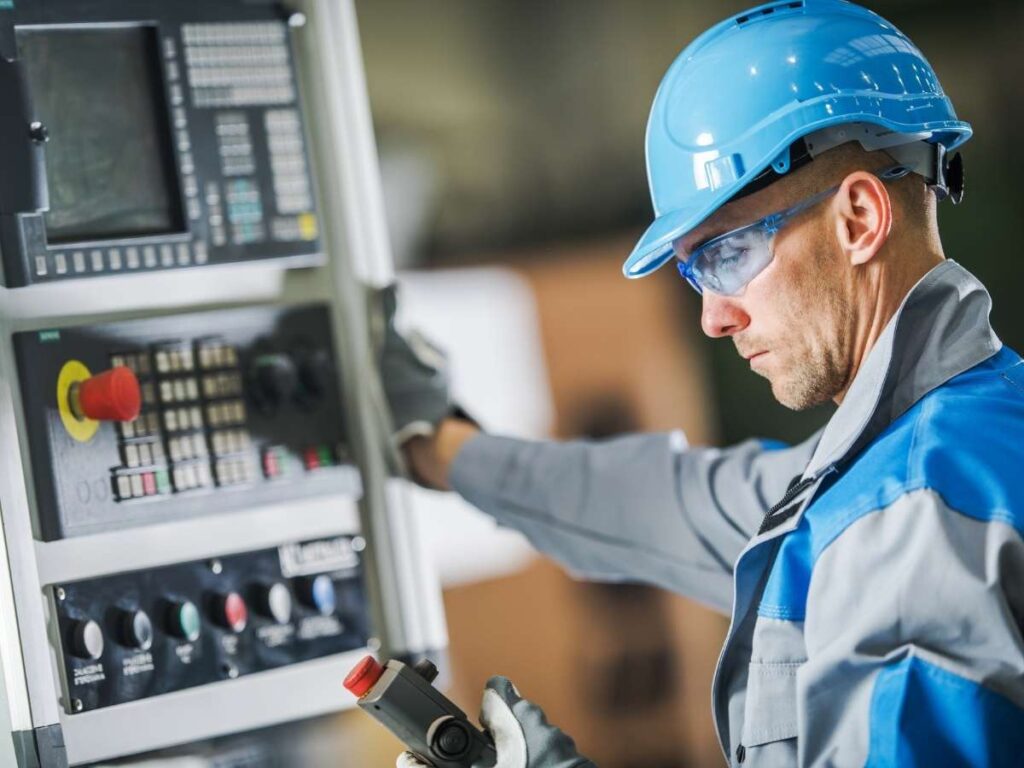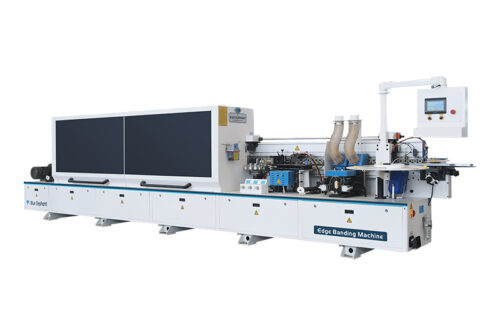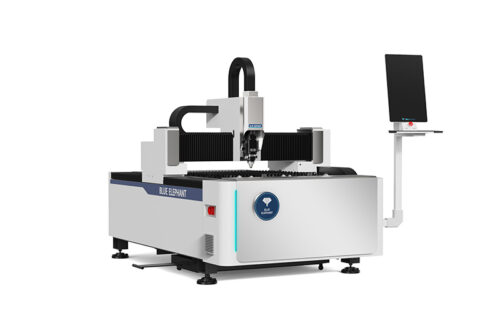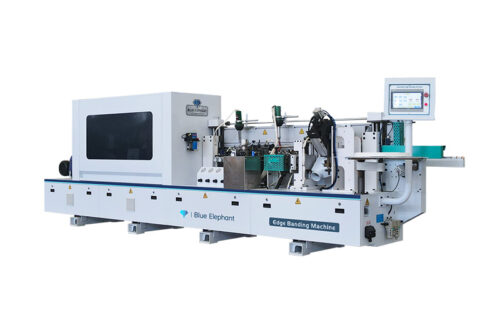I used to think all machine tools worked the same way. Then, one day, I made a costly mistake—assuming an NC machine could do what a CNC could. It couldn’t. The job took twice as long, and the cuts weren’t as precise. That was my wake-up call.
If you’ve ever struggled to understand NC vs. CNC, you’re not alone. I’ve been there too.
Over the years, I’ve worked with both and learned their differences the hard way. Now, I want to save you from that frustration.
In this guide, I’ll walk you through the key differences between NC and CNC machines. We’ll talk about how they work, where they’re used, and why one might be better for your needs.
By the end, you’ll have the knowledge to make the right choice—without the confusion I faced.
Let’s dive in!
1. What are NC and CNC Machines?
If you are in the machining industry, you’ve likely come across NC and CNC machines. But what exactly sets them apart? And more importantly, how do they impact efficiency, precision, and cost in your operations?
Understanding these machines isn’t just about knowing the acronyms—it’s about choosing the right technology for your business.
NC vs. CNC: What’s the Difference?
At their core, both machines automate machining, but the way they do it is completely different.
- NC (Numerical Control) Machines
- Use pre-set instructions stored on punched tapes or cards.
- Once programmed, they repeat the same sequence unless manually changed.
- No digital adjustments—every change requires a new tape.
- CNC (Computer Numerical Control) Machines
- Use computer software to control cutting, shaping, and machining.
- Operators can modify settings in real time without stopping production.
- More accurate, flexible, and efficient compared to NC machines.
I like to think of it this way: NC is like an old cassette tape, and CNC is like Spotify. One requires you to manually rewind, while the other lets you pick a song instantly.
2. Control System Differences
The first time I operated an NC machine, I felt like I was solving a puzzle—feeding in punched tapes, double-checking every step, and hoping I didn’t miss a detail. Then I used a CNC machine, where a few keystrokes and a simple program handled everything. That moment made the difference clear.
So, what sets these systems apart? Let’s break it down.
Manual vs. Computerized Control: The Core Distinction
NC and CNC machines both shape materials by following instructions—the difference lies in how those instructions are delivered and adjusted.
NC Machines: Manual Control with Pre-Set Instructions
- Operate Using Punched Tapes: Instructions are stored on paper tapes with holes that the machine reads.
- Fixed Commands: Each program runs the same way unless you manually change the tape or settings.
- Limited Flexibility: Any modification requires making a new tape or physically reconfiguring the machine.
CNC Machines: Fully Computerized Control
- Use Computer Software (G-code): Commands are input through software, offering precise and dynamic control.
- Real-Time Adjustments: Operators can tweak the program on the fly without halting operations.
- Automated Feedback Systems: Many machines include sensors that adjust automatically to maintain accuracy.
Think of it like using a manual typewriter vs. a modern laptop—one requires careful setup, while the other lets you edit, tweak, and improve instantly.

3. Programming & Flexibility Comparison
I worked with a CNC machine—where a few keyboard inputs let me tweak the program in seconds. That’s when I realized just how much flexibility CNC offers.
But what does that mean for you? Let’s compare how programming and flexibility differ between NC and CNC machines.
Programming
The way these machines process instructions is completely different.
NC Machines: Hardwired Instructions
- No Mid-Process Changes: Once started, the program runs to the end without interruption.
- Manual Reconfiguration Needed: Any update requires a new tape or mechanical adjustment.
- Slower to Adapt: Responding to design updates takes more time and effort.
CNC Machines: Digital Programming & Adaptability
- Programs Are Editable and Reusable: You can adjust, save, and rerun code as needed.
- Handle Multiple Operations: One setup can execute several steps, minimizing downtime.
- Easy CAD/CAM Integration: Designs can flow directly from software to production.
Flexibility: How Easily Can You Adapt?
If your business requires frequent adjustments or custom jobs, flexibility is key.
NC Machines: Best for Repetitive, Fixed Production
- Suited for High-Volume Runs: Ideal when producing the same part over and over.
- Limited Customization: Changing the design requires reprogramming or new punched tapes.
- Manual Setup Required: Operators must adjust machine settings by hand.
CNC Machines: Designed for Versatility
- Quick Changeovers: Easily switch between jobs with minimal setup time.
- Custom-Friendly: Perfect for prototypes, short runs, or design variations.
- No Production Downtime: Modify programs instantly without stopping the machine.

4. Production Speed: Which One is Faster?
Speed and efficiency can make or break a machining operation. A slower machine means longer lead times, higher labor costs, and reduced output. But does faster always mean better?
NC and CNC machines both automate machining, but their approach to speed and efficiency is very different. Understanding these differences can help you choose the right machine for your workflow.
NC Machines: Fixed Speed with Manual Adjustments
NC machines operate at a fixed speed, with settings determined by mechanical or tape-based inputs. Tool changes must be done manually, which slows down production between steps. Any adjustment requires stopping the machine entirely and reconfiguring it, making the process time-consuming.
While efficient for repetitive jobs with little variation, NC machines often come with long setup times, sometimes taking hours before a new job can even begin.
CNC Machines: Optimized for Speed and Adaptability
CNC machines are designed for optimized speed and adaptability. They feature smart speed control that automatically adjusts cutting parameters based on the material and tool condition. Tool changes are automated, keeping operations moving with minimal interruption.
CNC systems also allow real-time program edits, enabling users to make changes on the fly without halting production. This makes them ideal for high-mix, precision-focused environments where speed and flexibility are critical.
In terms of production speed and adaptability, CNC machines are the clear winner!

5. Complexity & Capabilities Comparison
Choosing between NC and CNC machines isn’t just about speed—it’s about what each machine can and cannot do. While both are used for automated machining, their capabilities differ significantly when it comes to precision, complexity, and adaptability.
If you need a machine that handles intricate cuts, adapts to changing designs, and minimizes human intervention, CNC machines lead the way. But if you’re producing simple parts in bulk, an NC machine might still get the job done.
How Complex Can the Machining Be?
Some jobs are straightforward, requiring only basic cuts and drilling. Others demand multi-axis movements, intricate shapes, and real-time adjustments. This is where the difference between NC and CNC really shows.
NC Machines: Simple and Limited in Design
NC machines are limited to basic geometries like straight lines and circular holes. They follow a fixed path once the program begins, with no real-time adjustment capabilities. Without multi-axis support, complex contours or angled cuts are difficult to achieve. In many cases, producing a more intricate design requires multiple setups, which slows down the process and adds manual work.
CNC Machines: Built for Complexity
CNC machines, on the other hand, are built for complexity. They can execute 3D contouring, multi-axis cuts, and detailed patterns with high accuracy. Operators can make real-time adjustments without halting production. Integration with CAD/CAM software eliminates the need for manual programming, streamlining workflow and boosting flexibility. A single setup can handle cutting, drilling, and shaping across multiple surfaces, drastically improving both speed and precision.
How Many Operations Can They Handle?
A machine’s capability isn’t just about what it can cut—it’s about how much it can do in a single setup.
NC Machines: One Operation at a Time
NC machines typically perform one operation at a time. Each punched tape or manual setting controls just a single task. Switching between tools or operations means stopping the machine and reconfiguring it, which leads to higher labor costs and lower efficiency. Operators need to manage each step closely, limiting scalability.
CNC Machines: Multi-Function Processing
CNC machines are designed for multi-function processing. They can automatically switch between cutting and drilling tools without stopping. Many models complete several operations in a single cycle, significantly reducing downtime. Some even incorporate auto-feeding systems for continuous, unattended production. This high level of automation supports lean manufacturing and helps meet tight delivery schedules without sacrificing quality.
A friend in the mold-making industry shared how his shop switched from NC to CNC. Previously, they ran separate machines for drilling, cutting, and finishing. With CNC, one machine handled everything—cutting production time by 50%.
I can see that CNC machines are capable of producing more workloads than NC, so if you’re looking for a reliable CNC supplier, try Blue Elephant. We employ advanced equipment, such as five-axis milling machines and laser cutters, to meet or exceed industry standards.
6. Cost Considerations: Which One is Worth Investing in?
A machine’s price tag isn’t the whole story. The real cost comes from setup time, maintenance, labor, and long-term efficiency. I’ve seen businesses buy NC machines to save money upfront, only to realize later that higher labor costs and slower production made them more expensive in the long run.
So, should you invest in NC or CNC? Let’s break down the costs that matter.
Upfront Cost: Which One is Cheaper?
NC machines are typically more affordable at the time of purchase. Their mechanical controls involve fewer electronic systems, which also makes initial maintenance simpler and less costly.
CNC machines, by comparison, come with a higher price tag. This is due to the advanced computerized control system, integrated software, and the need for skilled operators.
An NC machine may cost 40-50% less than a CNC machine upfront, but that doesn’t always mean it’s the best deal. At Blue Elephant, we offer CNC machines at competitive prices, often delivering better durability and stability than competitors in the same price range.
Maintenance & Repair Costs
NC machines are simpler to repair because they use fewer electronic components. However, this mechanical simplicity comes at a price: more frequent wear and tear, and often more downtime. Older models can be difficult to source parts for, which slows down repairs and raises costs over time.
CNC machines, while more complex, are designed with advanced diagnostics and sensors. These systems help reduce breakdowns by flagging problems early. Though you’ll need trained technicians to service them, predictive maintenance tools help extend machine life and reduce unscheduled downtime—ultimately keeping operations on track.
Long-Term ROI: Which One Pays Off?
When it comes to long-term return on investment, CNC machines usually offer the better deal. NC machines can serve well in environments focused on repetitive, high-volume tasks that rarely change.
But if your business takes on a variety of jobs, adapts to changing customer needs, or is aiming for growth, CNC machines are the better fit. They are faster, more precise, and far more adaptable. Automation reduces your dependence on manual labor and cuts the risk of errors, which means better margins and more consistent output.
One company invested in CNC after outgrowing their NC machines. Within three years, they doubled production and saw 40% more profit because of reduced errors and downtime.
7. Factors To Consider When Choosing Between NC and CNC Machines
Choosing between NC and CNC isn’t just about price or speed—it’s about what fits your workflow, production goals, and long-term plans. I’ve worked with businesses that stuck with NC machines for low-cost, high-volume jobs, while others upgraded to CNC to scale faster and reduce labor costs. The right choice depends on what your business needs today—and where you want it to be in the future.
Here are some key facts to consider:
Type of Work & Complexity
NC machines are best for simple, repetitive parts that don’t require frequent adjustments. They follow pre-set programs with limited flexibility, making them suitable for mass production. CNC machines, on the other hand, can handle intricate designs, multi-axis movements, and complex geometries, making them ideal for custom and precision machining.
Industry Requirements & Compliance
Certain industries, such as aerospace, medical, and automotive manufacturing, require strict tolerances and compliance with quality standards. CNC machines are better suited for these industries because they offer higher accuracy, repeatability, and digital traceability. NC machines may work for basic industrial applications, but they often lack the precision required for highly regulated sectors.
Integration with Digital Manufacturing
Modern manufacturing is shifting towards smart factories, automation, and digital integration. CNC machines can connect to CAD/CAM software, IoT systems, and automated workflows, improving efficiency and reducing human error. NC machines lack digital integration, making them less compatible with modern manufacturing technologies. If your business relies on automation and data-driven production, CNC is the clear choice.
Conclusion
Choosing between NC and CNC machines comes down to your business needs. NC machines are cost-effective for repetitive tasks, but CNC machines offer speed, precision, and flexibility that can transform your production.
Are you ready to upgrade your production?
At Blue Elephant, we offer CNC machines that undergo rigorous testing and use high-quality materials for long-term precision.
Contact us today to get the best machines!
Explore More of Our Resources
We’ve got more for you! These articles provide more tips and guidance to keep you on track:
CNC vs Other Technologies
- CNC Machine vs 3D Printer: A Side-By-Side Comparison
- CNC Machine vs Laser Cutter: A Complete Comparison Guide
- CNC vs Manual Machining: Key Differences
- CNC vs. Conventional Machines: What’s the Real Difference?
General Knowledge
- What is the Difference Between CNC and VMC Machine?
- CNC vs Normal Machines: What’s the Difference?
- Your Guide to Buying the Best Used CNC Machine
Still haven’t found what you’re looking for? Don’t hesitate to contact us. We’re available around the clock to assist you.













